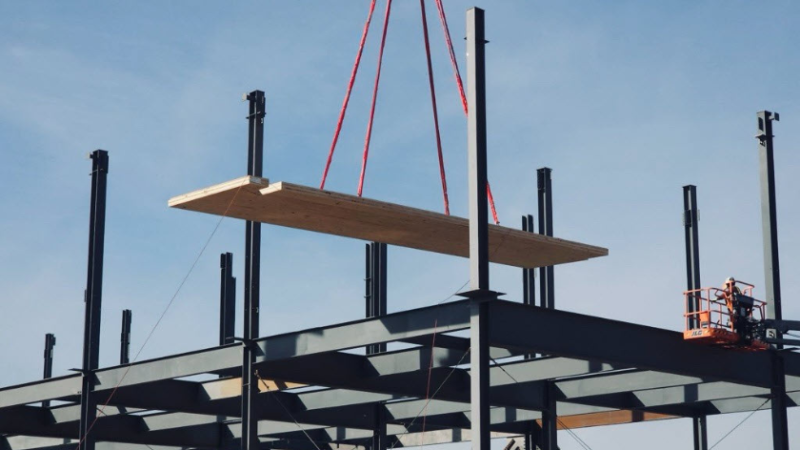The cloud giant is constructing two data centres in Virginia using cross-laminated timber, or CLT, a fire-resistant prefabricated wood which the company claims greatly reduces carbon compared to construction efforts that use traditional steel and concrete.
Subscribe today for free
A wooden data centre may sound absurd, but Microsoft engineers claim to have created a “hybrid” data centre that uses a combination of wood, steel and concrete to help decarbonise its data centre and construction operations.
CLT is being used to supplement concrete and steel throughout the two-story structure and will also be used on the exterior of the building.
Microsoft claims that the hybrid project will reduce the embodied carbon footprint of two facilities by 35% compared to conventional steel construction, and 65% compared to typical precast concrete.
“A lot of our suppliers are on the same journey as we are,” said Richard Hage, director of global data centre engineering strategy at Microsoft. He said that other businesses are “implementing key initiatives to lower the embodied carbon of their materials and their products.”
CLT has been specifically engineered to be low carbon produce, using plentiful wood sources, and less complex to manufacture.
It’s built by glueing together three to nine layers of timber stacked in alternate directions, which is then pressed into one solid panel. CLT can withstand high temperatures, emitting a layer of char that provides insulation and maintains the integrity of the structure for longer than steel.
This isn’t Microsoft’s first use of CLT, with the wood being used in the construction of the company’s new Silicon Valley headquarters in 2021.
“We’re constantly trying to validate the suitability of these novel materials for use in a data centre environment,” said David Swanson, a principal engineer at Microsoft who works on data centre design.

“We want to make sure that they’re going to perform, they’re going to be safe, they’re going to be resilient, and provide all the features that we’ve grown accustomed to all these hundreds of years that we’ve been using those other materials.”
The wooden data centers are part of Microsoft's ambitious sustainability goal to become carbon-negative by 2030 and by 2025, remove from the atmosphere all the carbon the company has emitted since its founding in 1975.
Beyond construction materials, Microsoft is also trying to source carbon-neutral power for its ever-expanding digital infrastructure.
The hyperscaler recently signed a deal with the operator of the infamous Three Mile Island nuclear plant to provide energy for its data centres.
RELATED STORIES
Microsoft revives Three Mile Island nuclear site to power its data centres
Microsoft, BlackRock launch $30bn fund for AI data centre investment






